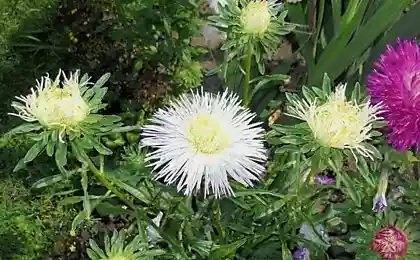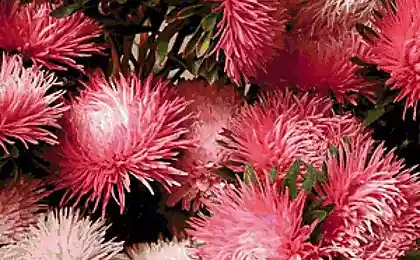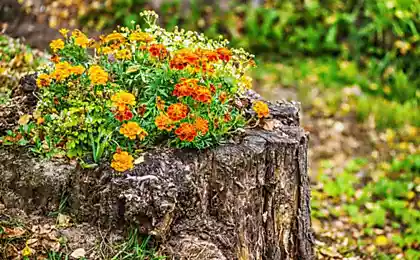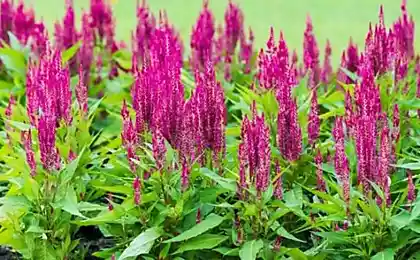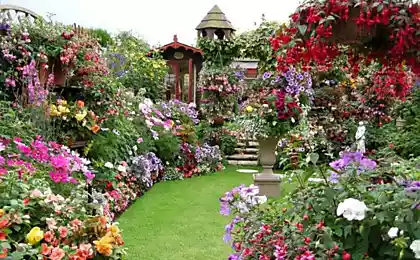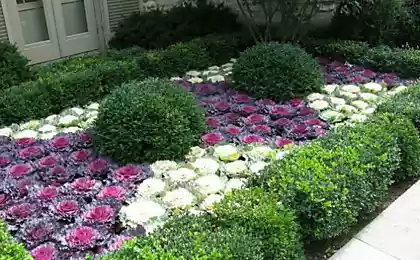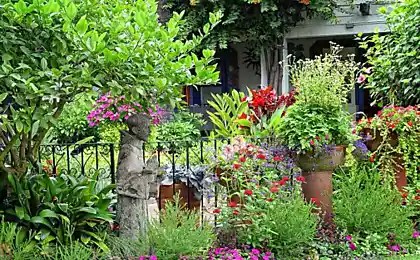1574
Perennial asters growing and care
Sixty three million four hundred eighty five thousand three hundred fifty three
Pokrovka, sedlabanki or oktyabrisky – flowers, which are well decorated with autumn garden, becoming a brightly colored ball at a time when all around is lit with the colors of autumn. However, not everyone knows that these perennial plants are close relatives is common for all asters annuals. In nature, there are about 500 species of perennial asters, but in garden culture are grown to a few, therefore we consider only the most common.
Perennial asters depending on the flowering period is divided into early-flowering (spring), srednebelaya (summer) and for autumn (fall).
1. Asters are perennial spring flowering period.
• Alpine Aster, grown from seeds which is among home gardeners practiced more often than other varieties. Low-growing plant 15-30 cm tall, with single flowers, diameter not exceeding 5 cm Flowering begins in may, a year after planting and lasts about a month. Have different varieties of blossoms can be white, blue, purple, pink and red color of the ray flowers and orange or brownish shade tubular flowers located in the middle.
• Astra Anders is a low-growing plant with purple buds.
2. Asters medium-term flowering, blooming from July to end of August.
• Italian Aster with lilac large corymbose inflorescences (up to 5 cm) and spherical bushes, reaching 30-70 cm in height.
• Astra Pricara with dark purple blossoms and shrubs over 70 cm in height.
• Astra acidalia with a small 2.5-3 cm in diameter purple with a bluish tint colors, and height of shrub to 1 m.
Fifty seven million six hundred sixty one thousand six hundred twenty nine
3. Asters blooming in the fall.
• Astra Heather. Herb with shrub height 80-105 cm, straight stems and linear leaves. Inflorescences small (about 1 cm in diameter), but numerous, white flowers. Drought and frost. Flowering period – September-October.
• Astra shrub. Has a dense gustooblistvennye the bushes with a height of 25-60 cm Early varieties of this species bloom in early autumn, usaiways white and pale blue buds. In addition, thanks to the abundant foliage Aster perennial shrub often grown as a decorative foliage plants along with the boxwood.
• New England Aster, also called the North American. Bush height in the middle reaches 160 see the bushes columnar, do not require additional supports. Small inflorescences 2.5-4 cm in diameter, numerous. Depending on the variety can have white, pink, purple, red, blue color. Bloom in September-October, can save a considerable number of buds until the first frosts.
• Astra novoblogika or virgin. Along with new England is considered to be one of the most common varieties. Within this species there are asters perennial low-growing (to 40 cm), the cultivation of which is especially popular when creating compositions, average height (to 75 cm) and tall varieties (up to 150 cm). Paniculate inflorescence with an abundance of flowers with a diameter up to 2 cm long densely cover the Bush. In prevalent colourings ligule purple, blue, red, white, various shades of pink.
Reproduction of perennial asters
Unlike its annual cousin, perennial Astra efficiently propagated in several ways: seeds, dividing the Bush, cuttings and vertical cuttings.
1. Perennial asters: growing from seed.
It should be noted that this method is most often used when growing from seed Alpine Aster, in respect of other types is rarely used, because the seedlings turn out quite weak and not always inherit maternal qualities.
Sowing is carried out in the autumn immediately after collection of seeds. If your chosen flower is the Alpine Aster, grown from seed which is more common, it is better to sow it in the spring when the soil warms up. With the onset of heat shoots appear, which leave the landing site until the autumn, when they are transplanted to a permanent place. Care of young plants from germination until transplantation, is simple and consists of timely watering, regular fertilizing complex fertilizers, loosening the soil and weeding. Mostly it is similar to growing asters of the same age from seed in the open ground before flowering.
One million five hundred fourteen thousand one hundred forty two
2. Aster, perennial: reproduction dividing the Bush.
To propagate the perennial asters division of the Bush when the plant reaches 4-5 years of age. Simultaneously with the division of the Bush plant is transplanted to a new area, as the period of detention asters of this type in one place should not exceed 5-6 years.
Reproduction of asters in such a method is carried out both in spring and autumn. It is recommended that the bushes early varieties that bloom in the spring, divide in fall, and late varieties optimal time to divide the hive is in the spring. For this adult bushes dug up and freed the roots from the soil. Moreover, the fall this is done approximately four weeks before the first frosts, and in spring before full Bud swelling. When you split the hive apart shears separate the segments of stems and roots. Certainly you need to ensure that the separated part of a well-developed root system and healthy shoots 3-5. Old rhizomes is better to remove at all, but young can a little trim.
3. Aster, perennial: layering.
The reproduction of vertical layering are possible for 4-year-old bushes of perennial asters. For this early spring shoots are cut, leaving stumps of 1.5-2 cm to obtain a larger amount of planting material required to provide a plant needs care, namely, timely watering and feeding. When the shoots grow to 10-15 cm from the base, their Spud. The center of the Bush should be tightly covered with soil in order to avoid convergence stems. After 20-25 days conducted a secondary ridging. It is advisable to do it after rain or heavy watering.
Branch cuttings carried out in the autumn or early next spring. Transplanting a plant is cut, leaving 2-3 buds. Flowering asters, grown from cuttings, should be expected not earlier than in the year to the second.
4. Aster, perennial: propagation by cuttings.
The largest number of young plants receive during the reproduction of perennial species Aster cuttings. The source material in this case will be long apical shoots of 10-15 cm, which in a shaded place planted under plastic cover. Rooting of cuttings occurs during the month.
When harvesting cuttings lower section made inclined, and the top should be straight, located half a centimeter above the kidneys. To reduce evaporation the top leaves are pruned, and the bottom and is removed. Before planting the cuttings should be kept in the water. Also for the best survival can be treated with growth stimulator in accordance with the instructions. The lower part of the stalk is 12-15 hours is placed in a solution of the drug to a maximum depth of 2-3 cm, it is Important to avoid getting the product on the leaves.
For rooting cuttings, suitable boxes, greenhouses, or specially prepared ridges with plastic cover, stretched over a frame.
Soil mixture for planting should consist of loam, sand and peat in proportion 1:2:2. Soil layer with a specified composition should be about 8-10 cm from the Top in the same amount poured perlite, coarse sand or a mixture of equal parts of vermiculite and sand, sand and peat to choose from. To disinfect the resulting substrate, it is desirable to treat pink solution of potassium permanganate. Plant cuttings to a depth of not more than 10 cm at an angle. The optimal planting scheme — 5×5 cm.
After planting the cuttings, it is important plenty of water and make a shade.
For effective rooting, you need to create an optimal climate with diffused sun light, temperature 22-25 degrees and humidity of about 100%. You should avoid sudden changes in temperature. It is desirable that the ground temperature was higher than air temperature by 1-3 degrees.
High humidity support for the first two weeks. While in heat are allowed 5 spraying the cuttings with water throughout the day, and on cloudy days will suffice, and 2-3 sprays. The leaves at this time should be constantly moist.
Full time rooting for 3-4 weeks, and the first signs of the emergence of kalyus appear after 1-2 weeks after planting.
For nursery, the resulting plants can be transplanted to a half-shaded area. Also, in place of rooting you can leave them until next spring when they will become Mature plants with strong roots. The only thing in the winter they would be better to cover with spruce branches, sawdust, straw, fallen leaves or peat. In may they can be safely transplanted to a permanent place.
Perennial asters, grown from seed which is less common than other methods of reproduction are a real highlight of the autumn garden and look great in the vase life. They are resistant to heat and cold. While basic care (No. 9) offers plenty of bright fluffy blossoms-stars.Perennial asters are probably one of the most popular fall flowers for many gardeners. The more that numerous graceful inflorescence and often late flowering times, combined with the simplicity of these plants to growing conditions. But at the same time a decorative Bush and abundant flowering can only be obtained initially by Aster suitable place and providing basic care. So, perennial asters: planting and care.
Where to plant Aster perennial?
It is worth noting that the best perennial species of asters grow in full sun or in partial shade. While Astra, planted in a shady corner of the garden can gradually lose its attractive appearance, poorly or not bloom. Besides this location, along with the likelihood of stagnant water in the soil normally contributes to the development of various diseases.
When choosing a place, you must also pay attention to the mechanical composition of the soil. Despite the insensibility of plants to this factor, perennial asters are more suitable neutral light and moderate nutrient loam soils with good moisture and air permeability.
Tall varieties, for example, Astra Novobelitskiy, when landing trying to locate in areas protected from drafts and wind, so they didn't break the Bush.
To prepare for planting perennial asters is recommended in advance, Perekopa and fertilized soil organic (humus, compost, peat) and mineral fertilizers (superphosphates, potassic fertilizers) because they, like asters annuals grow much better and tsvetonosy it is on correctly filled areas. If the level of acidity in the soil is elevated, then you can additionally make dolomite flour or lime (about 200 g per 1 sq. m). If the soil is heavy and poor drainage, then it is under perekopku bring coarse sand.
The technology of landing of perennial asters
When planting asters is important to consider the height and features of the Bush. So, low-growing asters are planted in the ground according to the scheme 20×30 cm, medium — 30×50 cm, and tall 50 x 80 or 60×100 cm For example, Astra shrubs, planting and care of which is not much different from other perennial species, can have a height of Bush from 25 to 60 cm depending on the characteristics of specific varieties, and the bushes are highly branched and heavily covered with foliage, because to put it better for less than the same Astra Alpine with single flowers and smaller bushes.
Seedlings of perennial asters, obtained by dividing the root, or grown on a separate plot seedlings and cuttings planted in a permanent place in a well dug and loosened already fertilized land. Depending on soil moisture is possible as a double watering (in holes and on top of the compacted soil in dry weather) and single, on top of lightly compacted earth when planting in moist soil. It is important to observe, not to damage the roots, and the soil is firmly settled around them and was left with air pockets.
Planting asters, it should be remembered that at one point they will grow 4-6 years, after which bushes will need to divide and transplant to another area.
Perennial asters: care
Mostly common in our gardens, perennial asters does not require special care. It is important not to forget about timely watering (particularly during drought, when watered abundantly, but not often, and in the period of active growth of vegetative mass), periodic tillage of the soil at a shallow depth (up to 7 cm) and removal of weeds.
To simplify the task with care will allow mulching. A layer of mulch (e.g., eroded peat) is placed around the Bush immediately after planting. Thus, on the soil around the plant does not form a crust, less weeds growing and not so quickly evaporates the moisture, which is important in the heat.
If the soil is nutritious or well seasoned before planting, then in addition to feed asters optional. At the same time they will positively respond to fertilizer or water-soluble complex phosphate fertilizers in the period of budding, and liming on the growth stage.
Depending on the particular species can be nuances in the care of these plants. So, Astra shrubs, planting and care which is otherwise identical to other types of machinery may require greater attention to the formation of a Bush by trimming the tops, which will not only stimulate the growth of side shoots, but also to tidy the living fences that the autumn will be covered with flowers. The topping from the other floriferous varieties increases the number of inflorescences.
Tall species such as new England Aster, especially if they grow in partial shade or bushes are too dense, sometimes require garters to additional supports. For this purpose, specially hammered pegs or originally planted plants along the fence.
During flowering to prolong it and keep decorative shrub, you should remove the faded blossoms.
Combating disease and pests
Themselves asters perennial is highly resistant to various pests and diseases. But under adverse weather conditions or insufficient care may be affected by Botrytis or powdery mildew. The best prevention of the disease may be correct agricultural techniques, in particular, a sufficient distance between the plants, and sometimes it is recommended to spray the asters with solutions containing copper (copper sulfate, copper oxychloride roughly 10 g per 10 liters) or special preparations (Gumi, fitosporin, Topaz) in accordance with the regulations. Sometimes as an alternative to chemicals using a soap solution consisting of 10 liters of water, and 40-50 g of soap and 30-50 grams of soda ash. Their plants are treated 3-4 times per season at intervals of two weeks.
Sometimes growers are faced with the problem that the middle of the Bush astr starts to dry out, and the young lateral stems seem to be weak and the flowers become smaller. That is a good indication that the plant needs rejuvenation, and simply put, Bush need to divide and transplant the resulting plants to a new location.
Preparation for winter
Most types of perennial asters, especially the Aster Heather, resistant to frost and do not require additional insulation for the winter. When flowering is over, it is recommended to prune the asters of the root, and the soil over the shrub to fill with compost, dry leaves or a layer of garden soil that spring can serve as mulch. Also a winter shelter out of twigs, leaves, etc. may need to young immature plants.
Perennial asters, planting and care, even the beginner, often planted as borders or hedges. They look great in gravel gardens and Alpine slides. They are valued for their late flowering, which effectively looks like next to other flowering perennials, and evergreen coniferous shrubs. Planted in single clumps or odnotonovye groups during flowering asters are like huge bouquets, dotted with many fine flowers.published
Source: sadovod-i-ogorodnik.ru
Pokrovka, sedlabanki or oktyabrisky – flowers, which are well decorated with autumn garden, becoming a brightly colored ball at a time when all around is lit with the colors of autumn. However, not everyone knows that these perennial plants are close relatives is common for all asters annuals. In nature, there are about 500 species of perennial asters, but in garden culture are grown to a few, therefore we consider only the most common.
Perennial asters depending on the flowering period is divided into early-flowering (spring), srednebelaya (summer) and for autumn (fall).
1. Asters are perennial spring flowering period.
• Alpine Aster, grown from seeds which is among home gardeners practiced more often than other varieties. Low-growing plant 15-30 cm tall, with single flowers, diameter not exceeding 5 cm Flowering begins in may, a year after planting and lasts about a month. Have different varieties of blossoms can be white, blue, purple, pink and red color of the ray flowers and orange or brownish shade tubular flowers located in the middle.
• Astra Anders is a low-growing plant with purple buds.
2. Asters medium-term flowering, blooming from July to end of August.
• Italian Aster with lilac large corymbose inflorescences (up to 5 cm) and spherical bushes, reaching 30-70 cm in height.
• Astra Pricara with dark purple blossoms and shrubs over 70 cm in height.
• Astra acidalia with a small 2.5-3 cm in diameter purple with a bluish tint colors, and height of shrub to 1 m.
Fifty seven million six hundred sixty one thousand six hundred twenty nine
3. Asters blooming in the fall.
• Astra Heather. Herb with shrub height 80-105 cm, straight stems and linear leaves. Inflorescences small (about 1 cm in diameter), but numerous, white flowers. Drought and frost. Flowering period – September-October.
• Astra shrub. Has a dense gustooblistvennye the bushes with a height of 25-60 cm Early varieties of this species bloom in early autumn, usaiways white and pale blue buds. In addition, thanks to the abundant foliage Aster perennial shrub often grown as a decorative foliage plants along with the boxwood.
• New England Aster, also called the North American. Bush height in the middle reaches 160 see the bushes columnar, do not require additional supports. Small inflorescences 2.5-4 cm in diameter, numerous. Depending on the variety can have white, pink, purple, red, blue color. Bloom in September-October, can save a considerable number of buds until the first frosts.
• Astra novoblogika or virgin. Along with new England is considered to be one of the most common varieties. Within this species there are asters perennial low-growing (to 40 cm), the cultivation of which is especially popular when creating compositions, average height (to 75 cm) and tall varieties (up to 150 cm). Paniculate inflorescence with an abundance of flowers with a diameter up to 2 cm long densely cover the Bush. In prevalent colourings ligule purple, blue, red, white, various shades of pink.
Reproduction of perennial asters
Unlike its annual cousin, perennial Astra efficiently propagated in several ways: seeds, dividing the Bush, cuttings and vertical cuttings.
1. Perennial asters: growing from seed.
It should be noted that this method is most often used when growing from seed Alpine Aster, in respect of other types is rarely used, because the seedlings turn out quite weak and not always inherit maternal qualities.
Sowing is carried out in the autumn immediately after collection of seeds. If your chosen flower is the Alpine Aster, grown from seed which is more common, it is better to sow it in the spring when the soil warms up. With the onset of heat shoots appear, which leave the landing site until the autumn, when they are transplanted to a permanent place. Care of young plants from germination until transplantation, is simple and consists of timely watering, regular fertilizing complex fertilizers, loosening the soil and weeding. Mostly it is similar to growing asters of the same age from seed in the open ground before flowering.
One million five hundred fourteen thousand one hundred forty two
2. Aster, perennial: reproduction dividing the Bush.
To propagate the perennial asters division of the Bush when the plant reaches 4-5 years of age. Simultaneously with the division of the Bush plant is transplanted to a new area, as the period of detention asters of this type in one place should not exceed 5-6 years.
Reproduction of asters in such a method is carried out both in spring and autumn. It is recommended that the bushes early varieties that bloom in the spring, divide in fall, and late varieties optimal time to divide the hive is in the spring. For this adult bushes dug up and freed the roots from the soil. Moreover, the fall this is done approximately four weeks before the first frosts, and in spring before full Bud swelling. When you split the hive apart shears separate the segments of stems and roots. Certainly you need to ensure that the separated part of a well-developed root system and healthy shoots 3-5. Old rhizomes is better to remove at all, but young can a little trim.
3. Aster, perennial: layering.
The reproduction of vertical layering are possible for 4-year-old bushes of perennial asters. For this early spring shoots are cut, leaving stumps of 1.5-2 cm to obtain a larger amount of planting material required to provide a plant needs care, namely, timely watering and feeding. When the shoots grow to 10-15 cm from the base, their Spud. The center of the Bush should be tightly covered with soil in order to avoid convergence stems. After 20-25 days conducted a secondary ridging. It is advisable to do it after rain or heavy watering.
Branch cuttings carried out in the autumn or early next spring. Transplanting a plant is cut, leaving 2-3 buds. Flowering asters, grown from cuttings, should be expected not earlier than in the year to the second.
4. Aster, perennial: propagation by cuttings.
The largest number of young plants receive during the reproduction of perennial species Aster cuttings. The source material in this case will be long apical shoots of 10-15 cm, which in a shaded place planted under plastic cover. Rooting of cuttings occurs during the month.
When harvesting cuttings lower section made inclined, and the top should be straight, located half a centimeter above the kidneys. To reduce evaporation the top leaves are pruned, and the bottom and is removed. Before planting the cuttings should be kept in the water. Also for the best survival can be treated with growth stimulator in accordance with the instructions. The lower part of the stalk is 12-15 hours is placed in a solution of the drug to a maximum depth of 2-3 cm, it is Important to avoid getting the product on the leaves.
For rooting cuttings, suitable boxes, greenhouses, or specially prepared ridges with plastic cover, stretched over a frame.
Soil mixture for planting should consist of loam, sand and peat in proportion 1:2:2. Soil layer with a specified composition should be about 8-10 cm from the Top in the same amount poured perlite, coarse sand or a mixture of equal parts of vermiculite and sand, sand and peat to choose from. To disinfect the resulting substrate, it is desirable to treat pink solution of potassium permanganate. Plant cuttings to a depth of not more than 10 cm at an angle. The optimal planting scheme — 5×5 cm.
After planting the cuttings, it is important plenty of water and make a shade.
For effective rooting, you need to create an optimal climate with diffused sun light, temperature 22-25 degrees and humidity of about 100%. You should avoid sudden changes in temperature. It is desirable that the ground temperature was higher than air temperature by 1-3 degrees.
High humidity support for the first two weeks. While in heat are allowed 5 spraying the cuttings with water throughout the day, and on cloudy days will suffice, and 2-3 sprays. The leaves at this time should be constantly moist.
Full time rooting for 3-4 weeks, and the first signs of the emergence of kalyus appear after 1-2 weeks after planting.
For nursery, the resulting plants can be transplanted to a half-shaded area. Also, in place of rooting you can leave them until next spring when they will become Mature plants with strong roots. The only thing in the winter they would be better to cover with spruce branches, sawdust, straw, fallen leaves or peat. In may they can be safely transplanted to a permanent place.
Perennial asters, grown from seed which is less common than other methods of reproduction are a real highlight of the autumn garden and look great in the vase life. They are resistant to heat and cold. While basic care (No. 9) offers plenty of bright fluffy blossoms-stars.Perennial asters are probably one of the most popular fall flowers for many gardeners. The more that numerous graceful inflorescence and often late flowering times, combined with the simplicity of these plants to growing conditions. But at the same time a decorative Bush and abundant flowering can only be obtained initially by Aster suitable place and providing basic care. So, perennial asters: planting and care.
Where to plant Aster perennial?
It is worth noting that the best perennial species of asters grow in full sun or in partial shade. While Astra, planted in a shady corner of the garden can gradually lose its attractive appearance, poorly or not bloom. Besides this location, along with the likelihood of stagnant water in the soil normally contributes to the development of various diseases.
When choosing a place, you must also pay attention to the mechanical composition of the soil. Despite the insensibility of plants to this factor, perennial asters are more suitable neutral light and moderate nutrient loam soils with good moisture and air permeability.
Tall varieties, for example, Astra Novobelitskiy, when landing trying to locate in areas protected from drafts and wind, so they didn't break the Bush.
To prepare for planting perennial asters is recommended in advance, Perekopa and fertilized soil organic (humus, compost, peat) and mineral fertilizers (superphosphates, potassic fertilizers) because they, like asters annuals grow much better and tsvetonosy it is on correctly filled areas. If the level of acidity in the soil is elevated, then you can additionally make dolomite flour or lime (about 200 g per 1 sq. m). If the soil is heavy and poor drainage, then it is under perekopku bring coarse sand.
The technology of landing of perennial asters
When planting asters is important to consider the height and features of the Bush. So, low-growing asters are planted in the ground according to the scheme 20×30 cm, medium — 30×50 cm, and tall 50 x 80 or 60×100 cm For example, Astra shrubs, planting and care of which is not much different from other perennial species, can have a height of Bush from 25 to 60 cm depending on the characteristics of specific varieties, and the bushes are highly branched and heavily covered with foliage, because to put it better for less than the same Astra Alpine with single flowers and smaller bushes.
Seedlings of perennial asters, obtained by dividing the root, or grown on a separate plot seedlings and cuttings planted in a permanent place in a well dug and loosened already fertilized land. Depending on soil moisture is possible as a double watering (in holes and on top of the compacted soil in dry weather) and single, on top of lightly compacted earth when planting in moist soil. It is important to observe, not to damage the roots, and the soil is firmly settled around them and was left with air pockets.
Planting asters, it should be remembered that at one point they will grow 4-6 years, after which bushes will need to divide and transplant to another area.
Perennial asters: care
Mostly common in our gardens, perennial asters does not require special care. It is important not to forget about timely watering (particularly during drought, when watered abundantly, but not often, and in the period of active growth of vegetative mass), periodic tillage of the soil at a shallow depth (up to 7 cm) and removal of weeds.
To simplify the task with care will allow mulching. A layer of mulch (e.g., eroded peat) is placed around the Bush immediately after planting. Thus, on the soil around the plant does not form a crust, less weeds growing and not so quickly evaporates the moisture, which is important in the heat.
If the soil is nutritious or well seasoned before planting, then in addition to feed asters optional. At the same time they will positively respond to fertilizer or water-soluble complex phosphate fertilizers in the period of budding, and liming on the growth stage.
Depending on the particular species can be nuances in the care of these plants. So, Astra shrubs, planting and care which is otherwise identical to other types of machinery may require greater attention to the formation of a Bush by trimming the tops, which will not only stimulate the growth of side shoots, but also to tidy the living fences that the autumn will be covered with flowers. The topping from the other floriferous varieties increases the number of inflorescences.
Tall species such as new England Aster, especially if they grow in partial shade or bushes are too dense, sometimes require garters to additional supports. For this purpose, specially hammered pegs or originally planted plants along the fence.
During flowering to prolong it and keep decorative shrub, you should remove the faded blossoms.
Combating disease and pests
Themselves asters perennial is highly resistant to various pests and diseases. But under adverse weather conditions or insufficient care may be affected by Botrytis or powdery mildew. The best prevention of the disease may be correct agricultural techniques, in particular, a sufficient distance between the plants, and sometimes it is recommended to spray the asters with solutions containing copper (copper sulfate, copper oxychloride roughly 10 g per 10 liters) or special preparations (Gumi, fitosporin, Topaz) in accordance with the regulations. Sometimes as an alternative to chemicals using a soap solution consisting of 10 liters of water, and 40-50 g of soap and 30-50 grams of soda ash. Their plants are treated 3-4 times per season at intervals of two weeks.
Sometimes growers are faced with the problem that the middle of the Bush astr starts to dry out, and the young lateral stems seem to be weak and the flowers become smaller. That is a good indication that the plant needs rejuvenation, and simply put, Bush need to divide and transplant the resulting plants to a new location.
Preparation for winter
Most types of perennial asters, especially the Aster Heather, resistant to frost and do not require additional insulation for the winter. When flowering is over, it is recommended to prune the asters of the root, and the soil over the shrub to fill with compost, dry leaves or a layer of garden soil that spring can serve as mulch. Also a winter shelter out of twigs, leaves, etc. may need to young immature plants.
Perennial asters, planting and care, even the beginner, often planted as borders or hedges. They look great in gravel gardens and Alpine slides. They are valued for their late flowering, which effectively looks like next to other flowering perennials, and evergreen coniferous shrubs. Planted in single clumps or odnotonovye groups during flowering asters are like huge bouquets, dotted with many fine flowers.published
Source: sadovod-i-ogorodnik.ru

